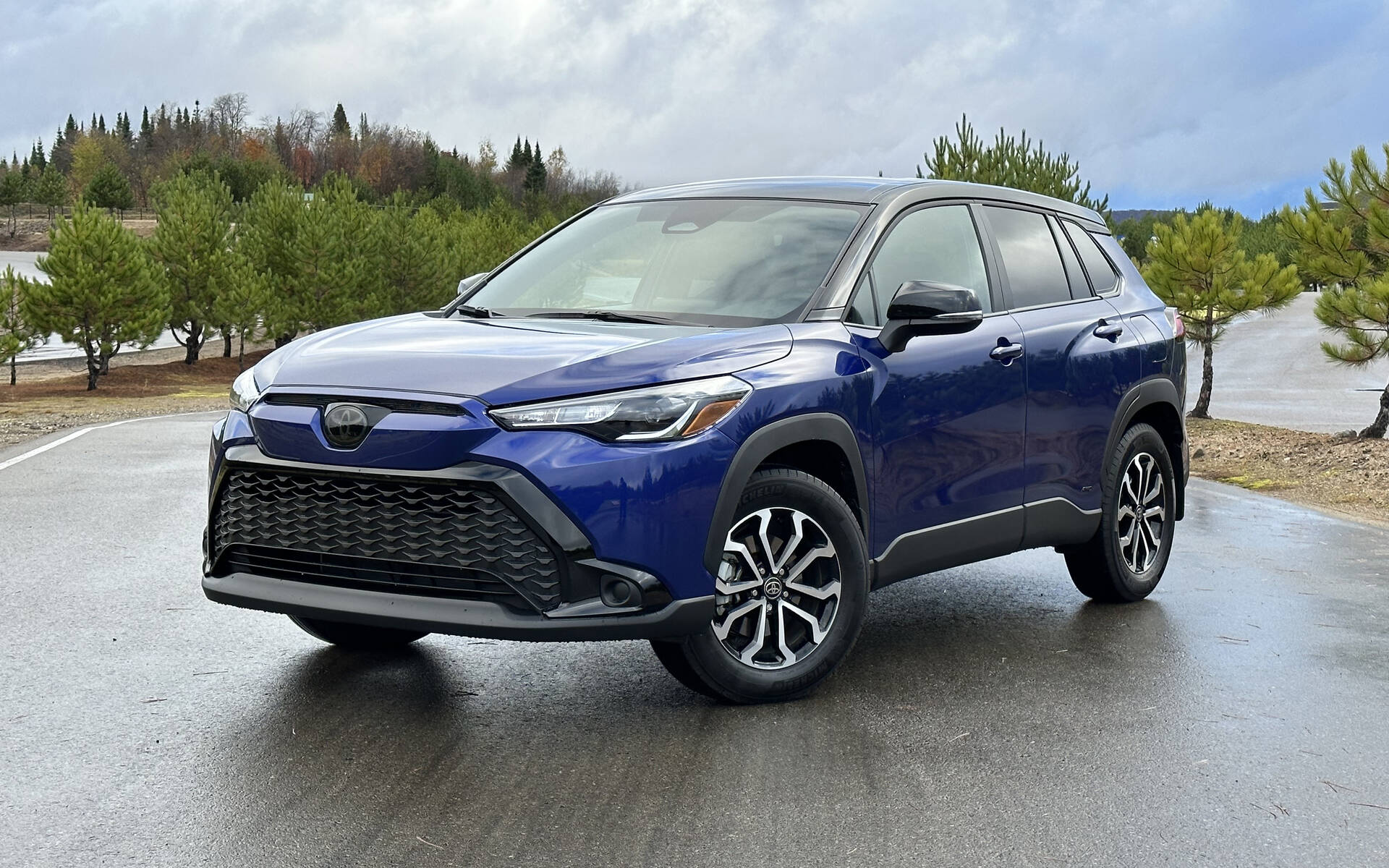2024 Toyota Corolla Cross: The Ace Up Toyota's Sleeve


Let’s face it, Toyota absolutely needed the new Corolla Cross to succeed where the departed C-HR (which was initially supposed to be sold as a Scion product) arguably failed—offering a compelling and practical alternative to the larger RAV4 at a lower price. There hadn’t been one in Canada since the Corolla-based Matrix hatchback was discontinued a decade ago despite winning many people over with generous cargo room and available AWD.
The Corolla Cross definitely has what it takes to compete with the best crossovers in the segment, including great reliability and build quality that lives up to the expectations of demanding Toyota customers, but something was missing to outshine them all. The automaker fixed that last year with the addition of a hybrid variant.
Read also
- You Should Avoid the Front Passenger Seat in Some Toyota Corolla Crosses
- 2023 Toyota Corolla Cross Hybrid: The Story Continues

Bland Looks, Tremendous Hybrid Tech
How is it possible that sales of the Toyota Corolla Cross are about 40 percent lower than those of the Kia Seltos, which doesn’t provide any form of electrification? Part of the reason, no doubt about it, is the bland exterior combined with an interior that’s not as cutting-edge as what the Korean rivals offer.
Styling is pretty boring, indeed, which is why Toyota recently introduced a sportier-looking Nightshade Edition in the U.S. Too bad Canada is being denied this model.

Now, the ace in Toyota’s sleeve is unquestionably the available hybrid powertrain. Every crossover or SUV in the lineup offers one, save of the ancient 4Runner, and the Corolla Cross Hybrid happens to be the only one of its kind. That’s pretty strange when you think about it, because the compact segment right above is loaded with hybrid models including the Toyota RAV4, Ford Escape, Honda CR-V, Hyundai Tucson and Kia Sportage. In fact, most of these offer both hybrid and plug-in hybrid options.
Here we have a 150-horsepower, 2.0-litre four-cylinder engine combined with two small electric motors and a 1.4kWh battery. Total system output is rated at 196 horsepower, matching sportier versions of the Hyundai Kona, Kia Seltos and Subaru Crosstrek, but with fuel economy that’s about 35 percent better (up to 3.1 L/100 km). The Mazda CX-30 Turbo is in a class of its own with up to 54 extra horsepower, but requires premium gasoline.

Do the Math
For a driver logging 20,000 km a year, a 35-percent improvement in fuel economy means a saving of $1,085 at the pump, based on gas prices of $1.75 per litre. Over time, that would make a ton of extra money in a driver’s pockets.
What about a gas-powered Corolla Cross LE AWD versus a Corolla Cross Hybrid SE (as tested)? The latter demands a premium of $3,500, so you would need less than five years to get a return on your investment—again, assuming you’d drive 20,000 km a year and pay $1.75 per litre of gas. People who don’t travel a lot might not see any financial advantage, but there’s another thing to consider: depreciation will be slower for the hybrid model, resulting in better residual value.

On top of that, the AWD system is different from the one found on the standard Corolla Cross (169 horsepower). Instead of using a driveshaft, the hybrid model relies on the two electric motors (one for each axle) to distribute torque electronically in seamless and instantaneous fashion. It’s not as capable as torque-vectoring AWD systems employed by Mazda and Subaru, mind you.
The quiet and comfortable ride delivered by the Corolla Cross Hybrid alone could justify the price difference over its gas-only counterpart, as far as we’re concerned. It feels solid and composed most of the time, and that’s going to please a majority of customers. Of course, the little Toyota is not as fun to drive as a Mazda CX-30 or as adventurous as a Subaru Crosstrek. The continuously variable transmission also proves unpleasant under hard acceleration. For the record, 0-100 km/h sprints are achieved in 8.1 seconds, which is quite decent for a small, entry-level crossover.
Dark but Cozy
Just like the RAV4 Hybrid, the 2024 Toyota Corolla Cross Hybrid gets a different treatment on the outside. Changes include a unique front fascia, wheel designs and colour choices. Our SE tester, for example, sported a handsome two-tone exterior ($540). On the other hand, the interior was all-black whereas L, LE and XLE grades of the gas-burning variant are available with livelier combinations. Making matters worse is the lack of a sunroof, although there is one in top-line XSE trim.

The good news is that comfort is outstanding. The seats are nicely designed and ample space can be found, allowing easy installation of booster car seats in the rear. As for cargo, the 609-litre trunk comes in handy. Ergonomics are not a problem, either, but Toyota could certainly take a page from Korean competitors when it comes to designing attractive layouts and dashboards.
Content is generous, especially where the XSE model is concerned. Some of the additional goodies include a wireless smartphone charger, power liftgate, synthetic leather upholstery, power-adjustable seats, dual-zone climate control, leather-wrapped and heated steering wheel, power sunroof, LED headlights and more.

Yeah, we know, the 2024 Toyota Corolla Cross Hybrid isn’t cheap. Pricing starts at $37,245 including freight, PDI and those damned dealer fees of $899, while the fully loaded XSE retails from $40,005. That’s RAV4 Hybrid money from just a few years ago, by the way. Subcompact crossovers today are just as expensive as compact models were in pre-pandemic times. But when you think about the significant fuel savings and higher residual value, this is product that makes a whole lot of sense.
Availability remains an issue, however. You might have to wait over a year to take delivery of a Corolla Cross Hybrid, depending on the dealer you order it from. Just know that the wait is worth it.








